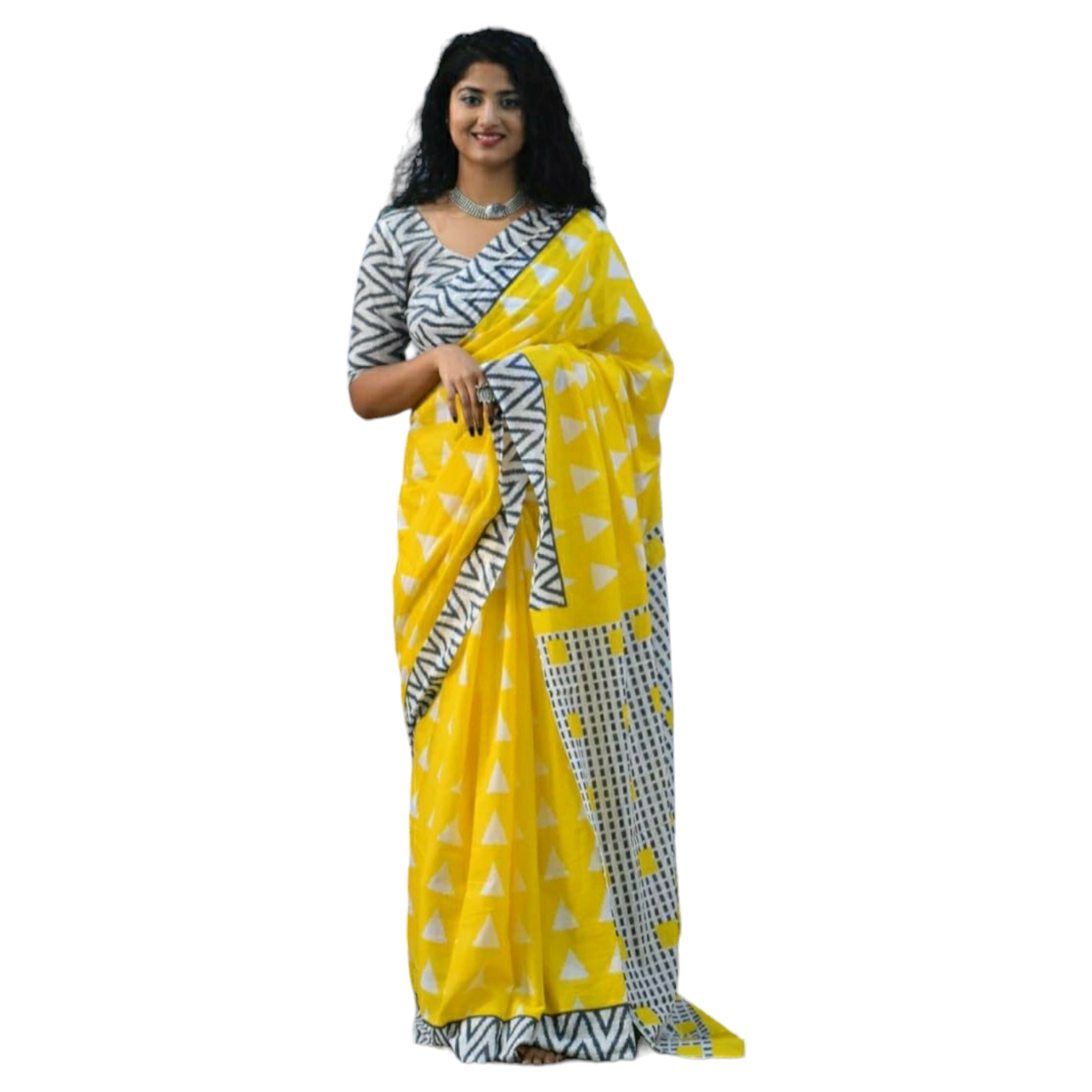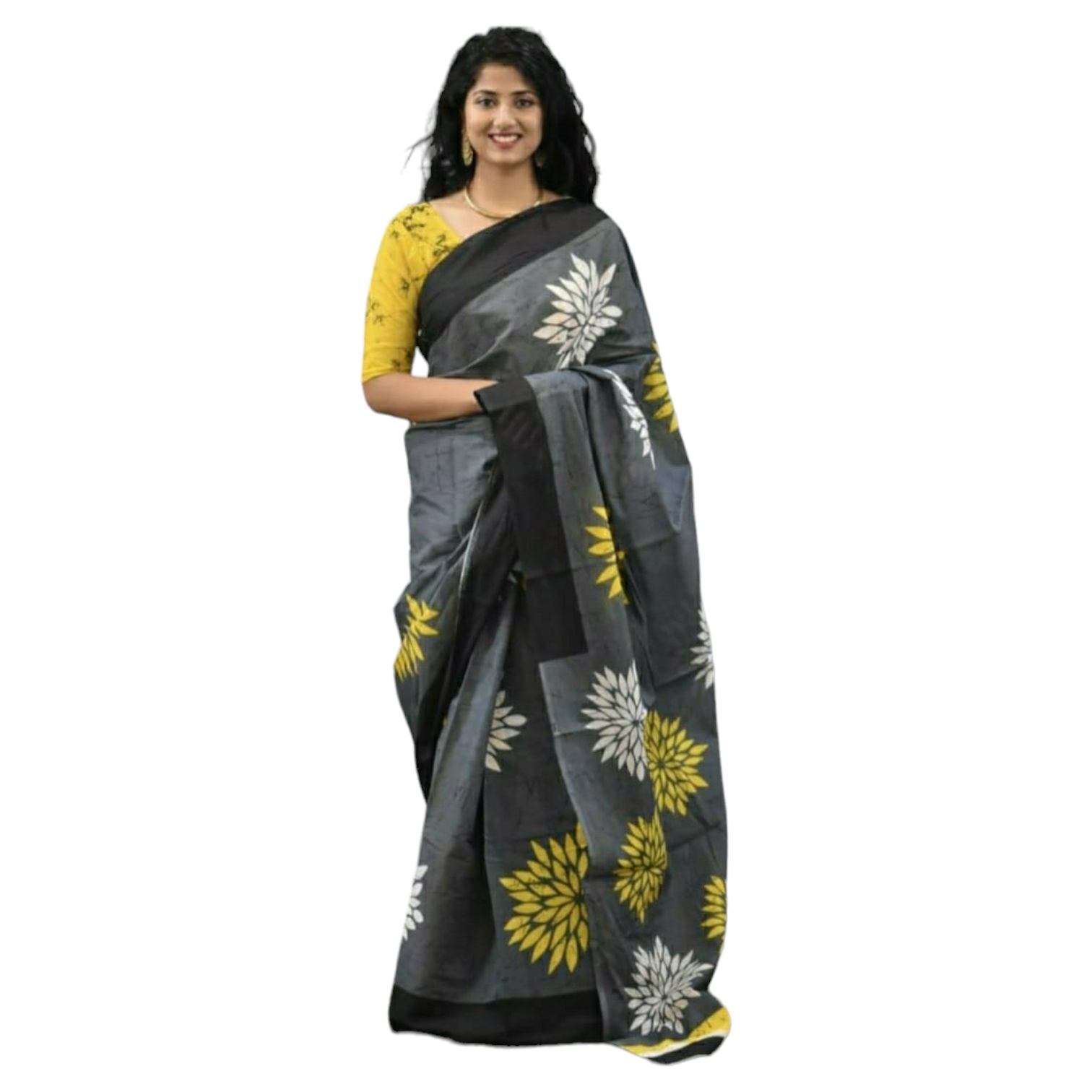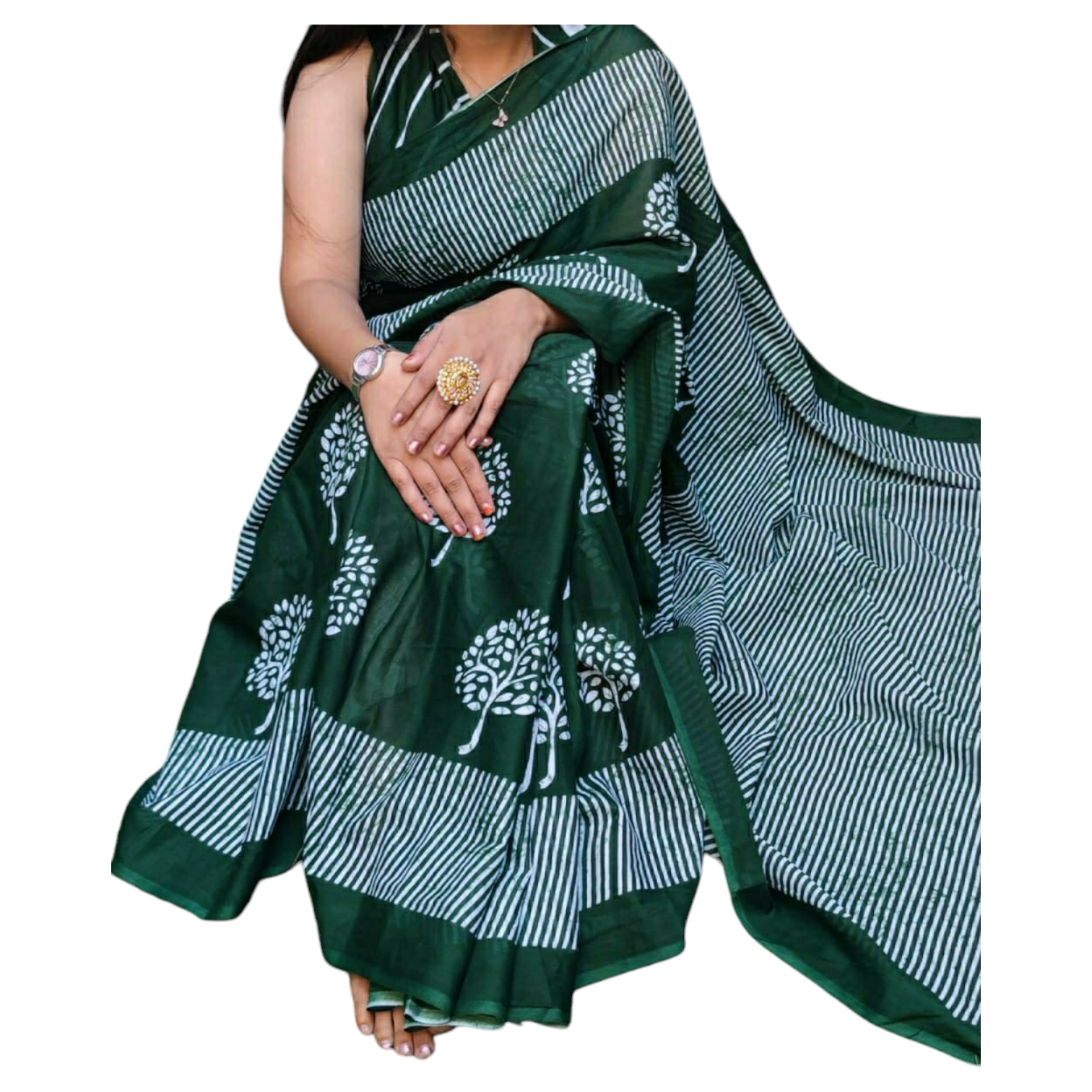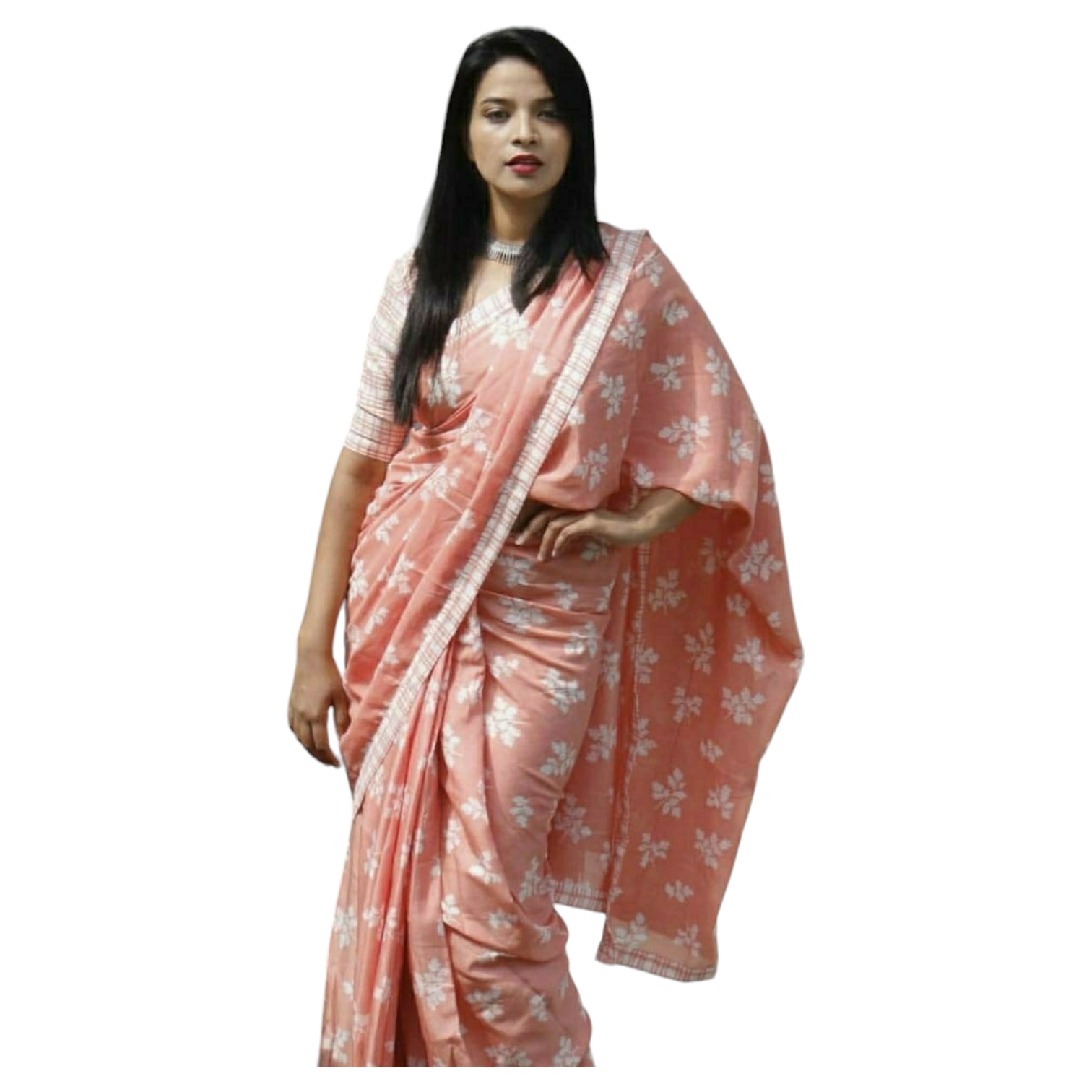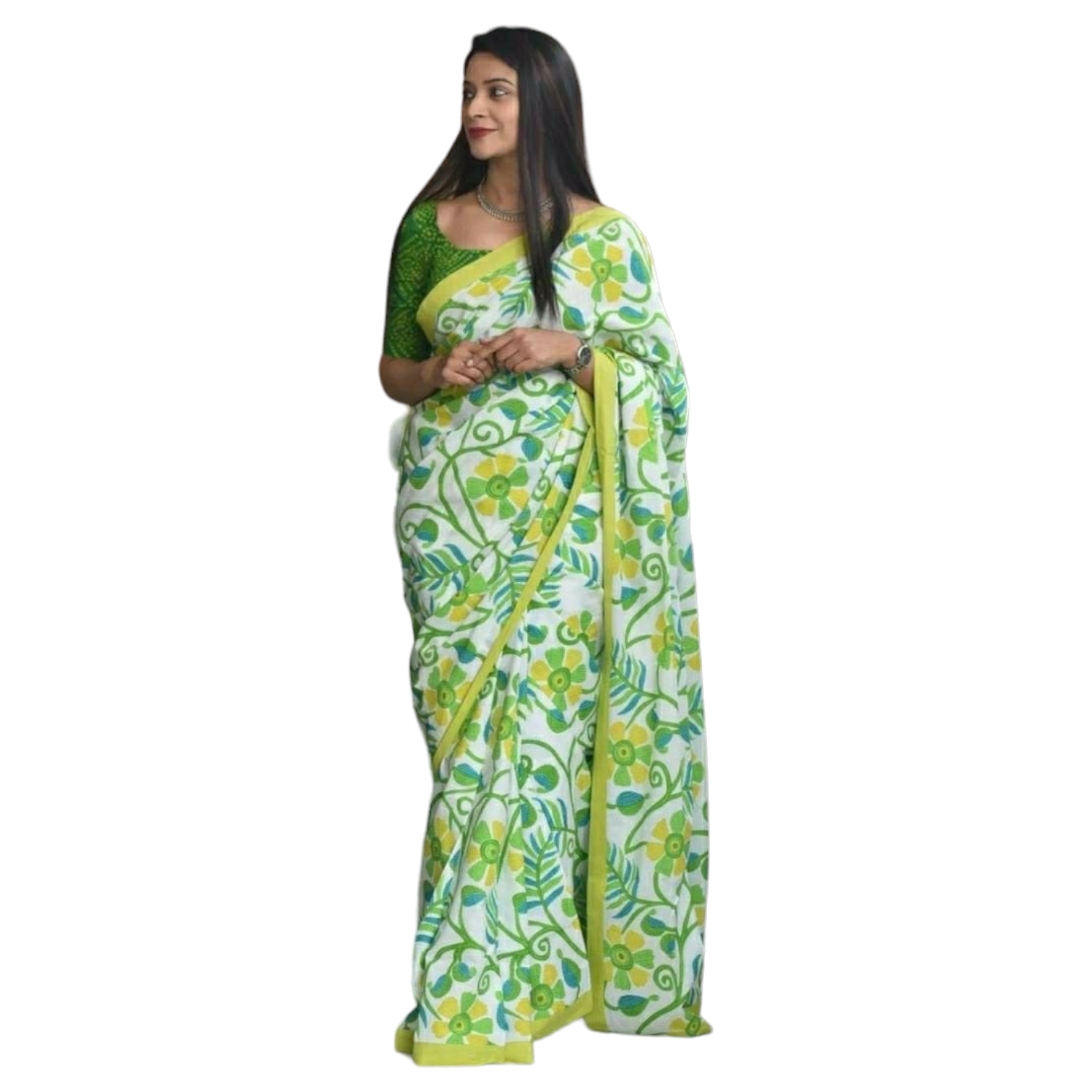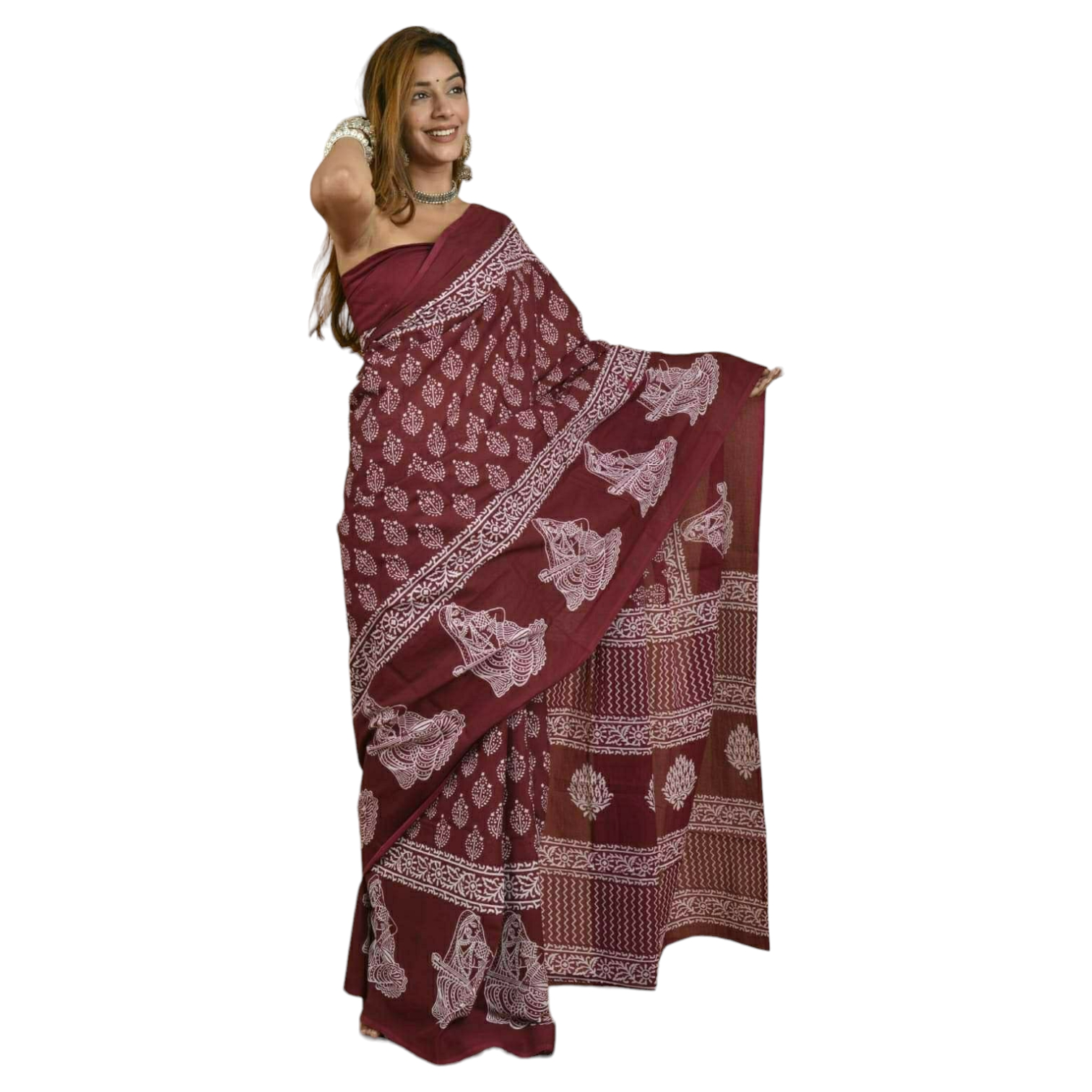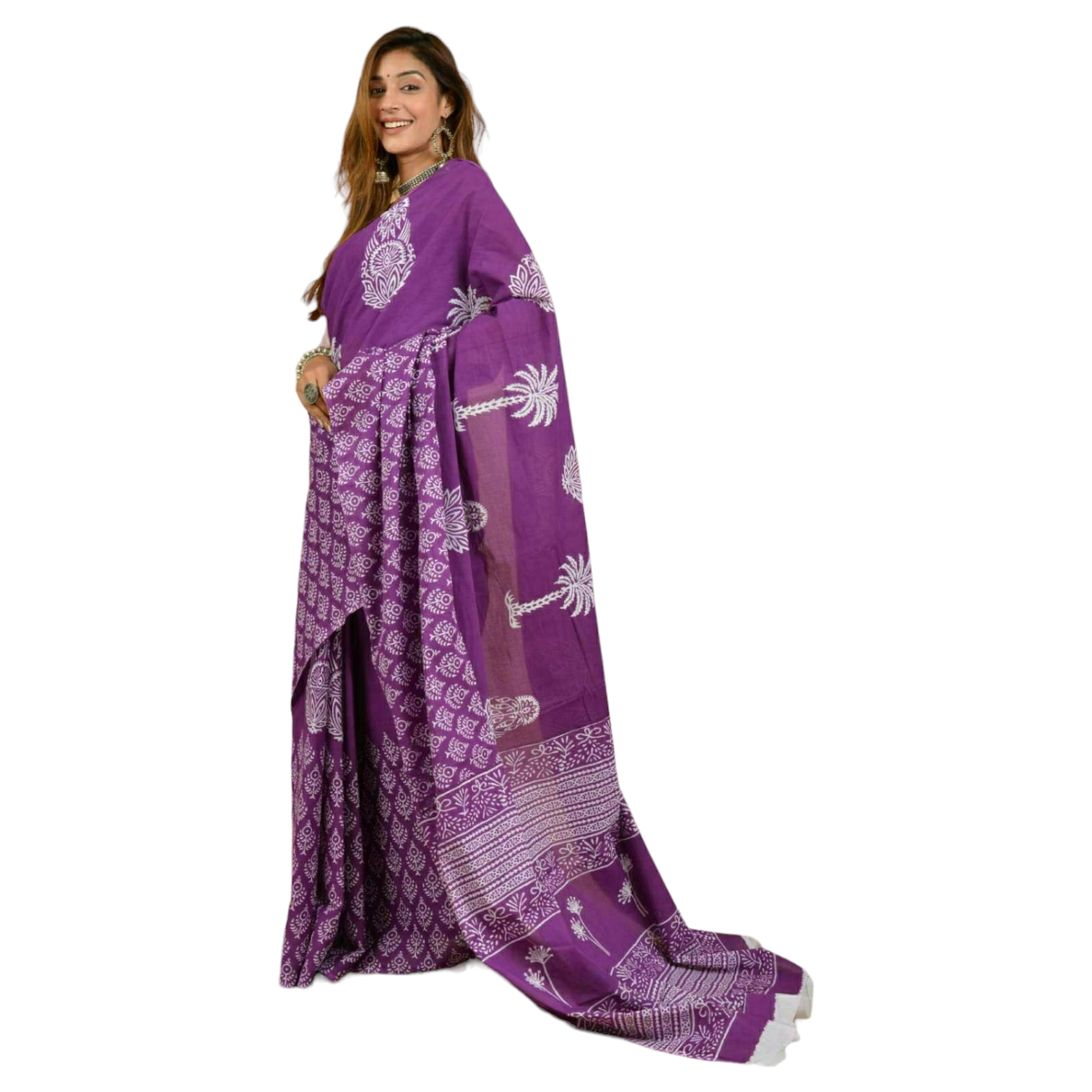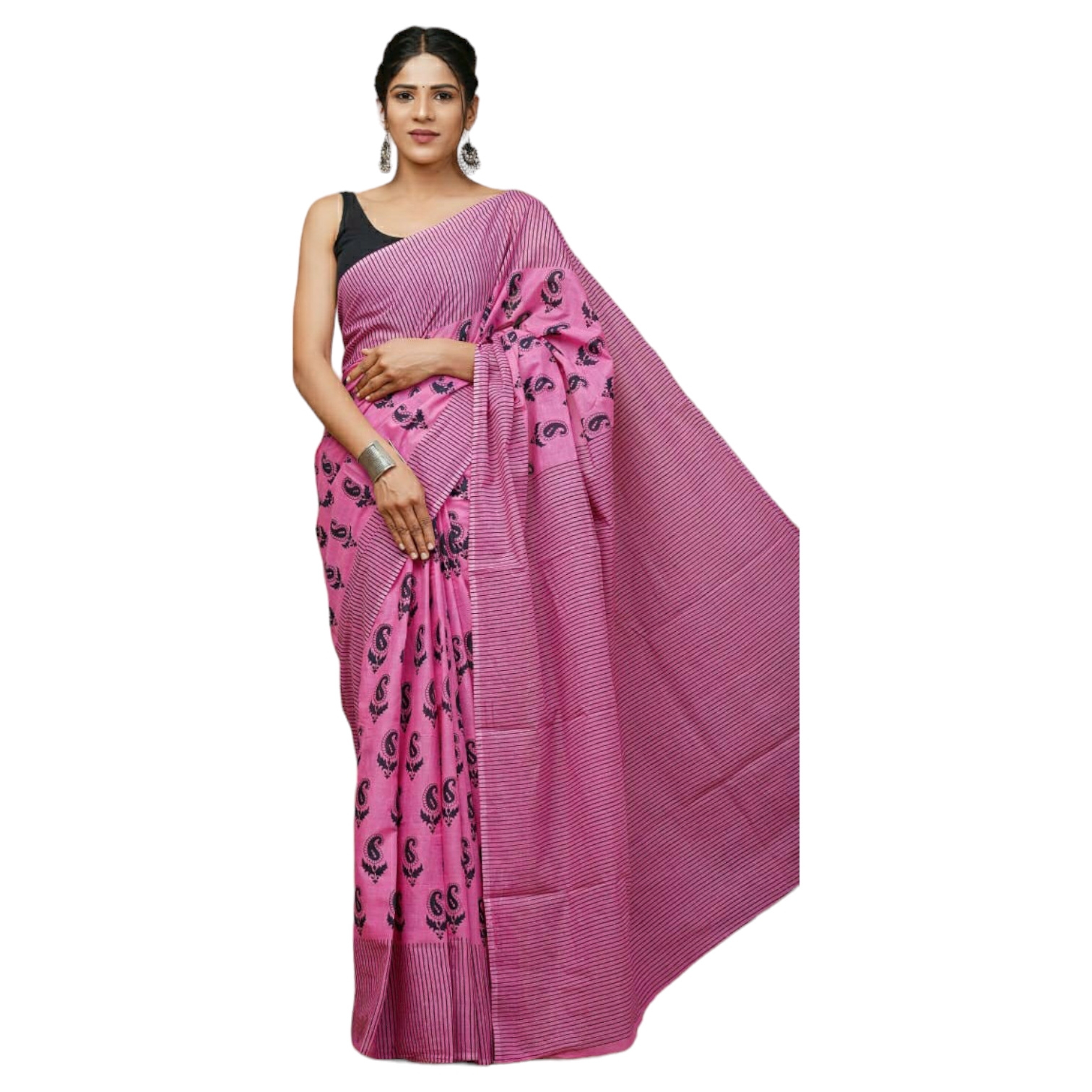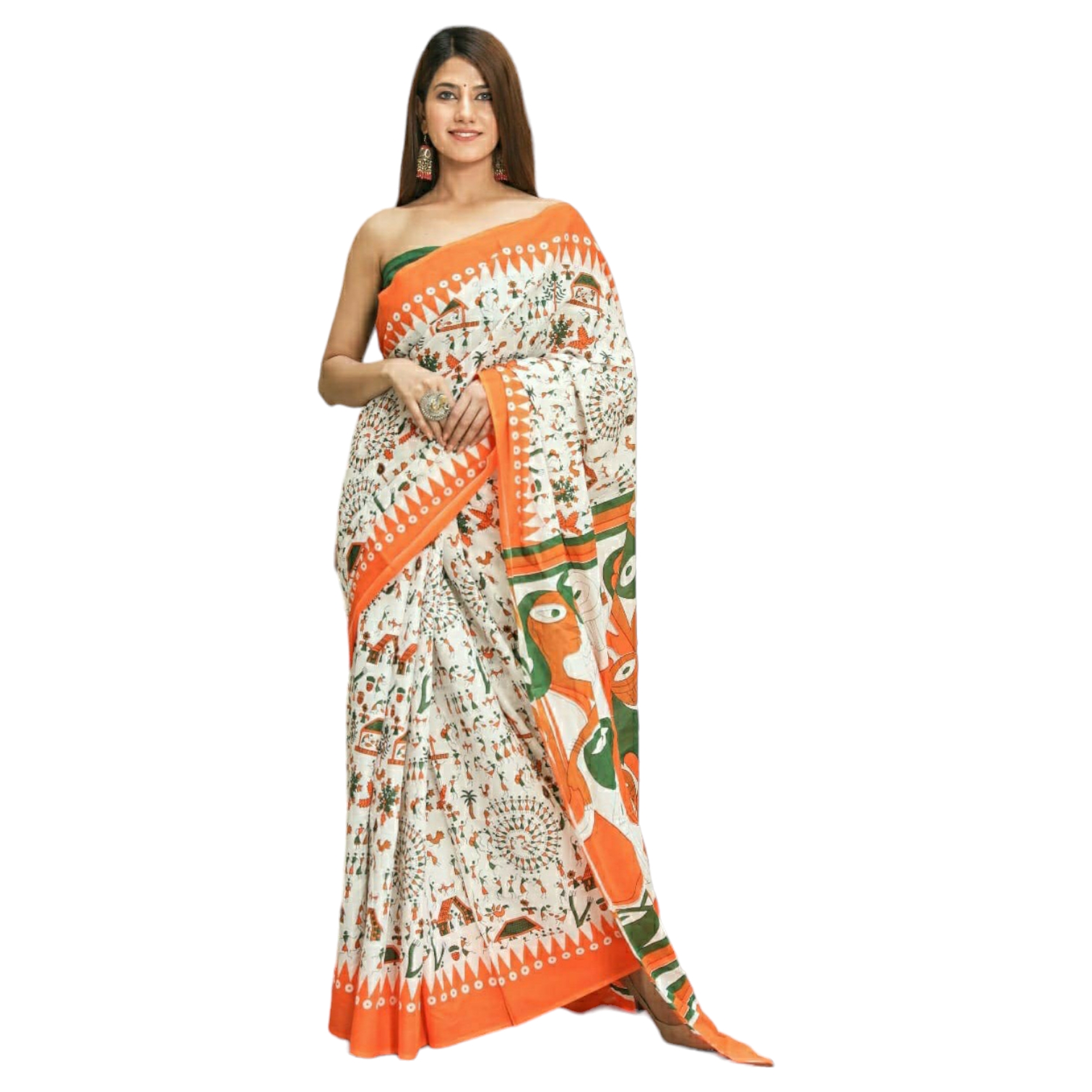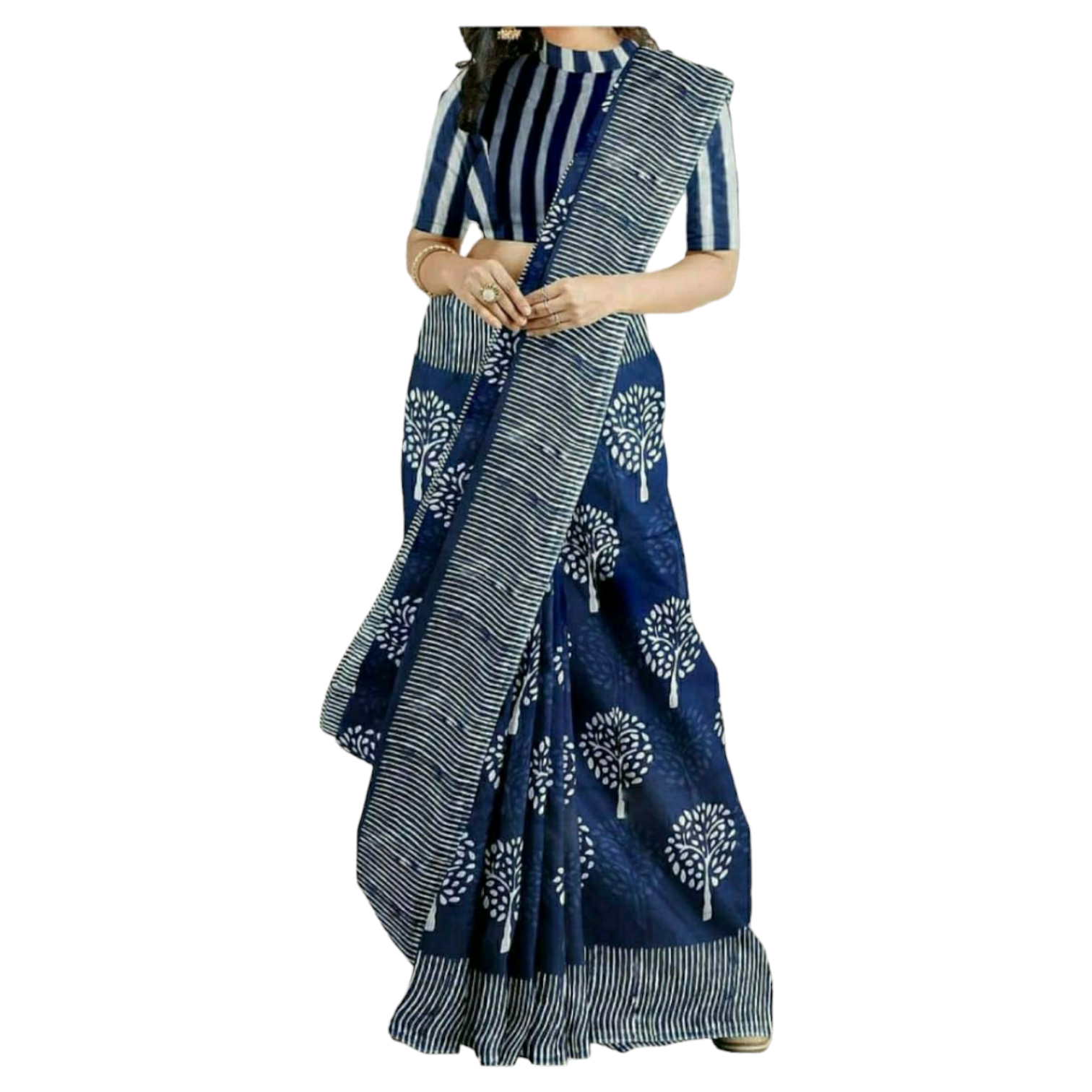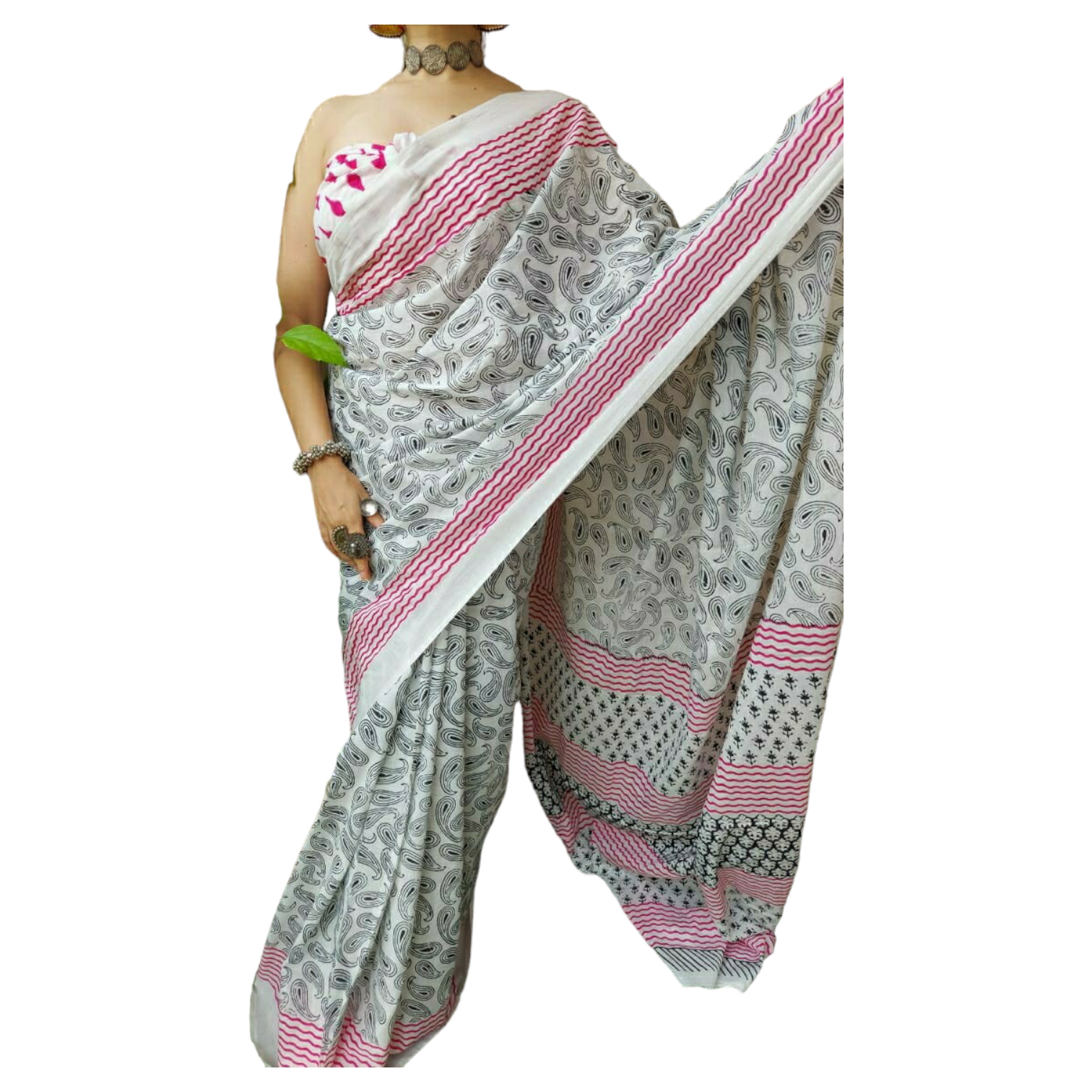Yellow and Black colour Bagru Print Saree
The Yellow and Black Bagru Print Saree blends traditional craftsmanship with contemporary elegance. Crafted with care, it features intricate Bagru printing, a traditional Rajasthani art form known for its meticulous patterns and vibrant hues. The striking contrast of yellow and black creates a captivating visual appeal, making it a timeless choice for any occasion. Adorned with intricate motifs and fine detailing, this saree exudes sophistication and cultural charm, offering a unique blend of tradition and modernity.
- Need Assistance? Feel free to reach us at support@giheritage.com or contact +91-7483932390 for assistance.
- Note: Although an artisan meticulously crafts their work with great attention to detail, there may still be some minor difference present, showcasing the inherent imperfections that add a touch of uniqueness to each piece. Kindly ignore such minor differences and slight variations in color, weight and dimensions as it adds to the uniqueness of product. Each piece is a one-of-a-kind treasure, making your purchase truly special.
- • GI Origin : Rajasthan
- • Product Material : Mulmul Cotton
- • Saree Length : 5.5 Mtr
- • Blouse Length : 1 Mtr
- • Colour : Yellow & Black
- • Weight : ~ 500grams
Description of Goods:
Bagru Prints are mostly on cotton and sometimes on cotton x silk. A wide range of made-ups, home furnishings, and garments are produced from Bagru Printed cloth. All Bagru Prints display an extensive variety of Butis and Butas with various colors, traditional shades of colors, and designs created by skilled Chhipas who possess expertise in preparing color mixtures using desired ingredients in specific ratios. Colors used for Bagru Hand Block Print are mostly vegetable dyes (natural colors). The creation of rich and wide range of print designs is a result of careful stamping by wooden blocks. Turners locally known as Kharadiyes possess the skill of producing desired blocks using dried wood of plants like “shisham,” “gurjan,” “mango,” “teak,” and “ardu.” Thus, it is the skill of Chhipas and Kharadiyes that results in the production of well-known Bagru Prints. The size of these items can vary as per demand.
Geographical Area of Production:
The geographical areas of production of Bagru Hand Block Print include Bagru, Kaladera, Jahota, and Jairampura. Of these, Bagru town is the main production center.
Proof of Origin (Historical records):
Bagru, an early 16th century town near Jaipur, developed into a flourishing textile production center and was at its peak in the 19th century. Even today, large numbers of industrial units (micro and medium level) produce Bagru Hand Block Prints for local as well as export markets. The art of hand-block printing and design was developed to a high level of sophistication, and this small 16th century village blossomed into one of India’s busiest artisan centers, as evidenced by several specimens kept in national and foreign museums and/or descriptions of this craft and skill given in several books and journals written by Indian and foreign authors.
According to historian Prof. Dr. G.N. Sharma, Bagru was famous and known for its dyed or printed chintzes. Similarly, according to historian Prof. Mohan Lal Gupta, Bagru Hand Block Print Industry has been a flourishing industry for the last five centuries. Numerous other references from historical records describe Bagru as an important center for dyeing and printing fabric, indicating the town's long-standing reputation in textile art.
Method of Production:
The manufacture of Bagru Hand Block Print continues to adopt traditional methods for the preparation of dye mixtures, pre- and post-treatment of the cloth for printing and finishing. Various steps involved and details of these are as follows:
- Scouring (pre-processing of fabric before printing), locally called “Hari Sarana”
- Tannin or preparing fabric for printing, locally called “Peela Karna” or “Harda Rangai”
- Printing with mordant in salts, locally called “Chapai”
- Drying of printed fabric or aging before dyeing the fabric in natural dye, locally called “Sukhai”
- Washing or removal of excess mordant before dyeing, locally called “Khulai”
- Dyeing or fixing of colors after washing, locally called “Rangai”
- Resist printing or mud clay printing, locally called “Dhabu Datai”
- Dyeing with blue color, locally called “Neel Rangai”
- Dyeing with yellow dye, locally called “Haldi Naspal Putai”
- Post-mordanting or fixing of yellow dye, locally called “Fitkari Rangai”
- Final washing, locally called “Dhulai,” to get rid of all the excess dye and resist paste
Uniqueness:
Bagru Hand Block Prints are known for their off-white (cream) ground color, small motifs (flowers, leaves, and buds; intertwisted tendrils; trellis designs; figurative and geometric designs), and distinctive black and red color combinations harmonized on the same fabric. The standard benchmark of Bagru Hand Block Prints lies in the long-inherited skills of the local artisan community, known as Chhipas, who have professionalized hand block printing as their rightful profession and means of earning for more than six generations.
Dye preparation for desired colors and shades is a guarded secret of the Chhipas of Bagru, involving the use of bark, flowers, roots of locally available trees, river water, and fine clay sand. This unique process and the interdependency between manufacturers and craftsmen result in the well-known Bagru Hand Block Prints, which have gained recognition for their quality and wide range of prints.

 USD
USD INR - ₹
INR - ₹
 CAD - Can$
CAD - Can$
 EUR - €
EUR - €
 GBP - £
GBP - £
 SGD - S$
SGD - S$
 AUD - A$
AUD - A$
 MYR - (RM)
MYR - (RM)
